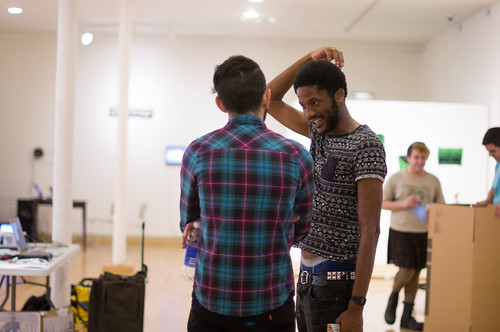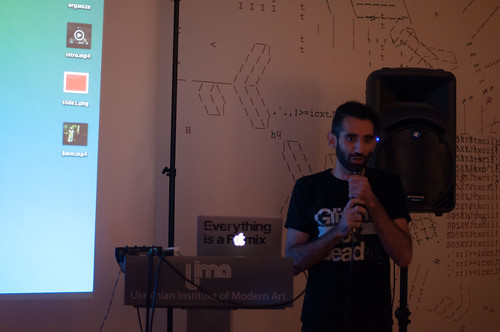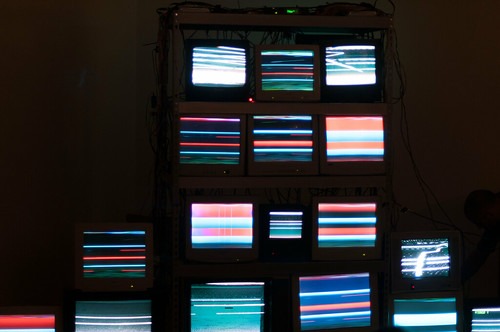I’ll be back in Chicago in September to take part in glitChicago at the Ukrainian Institute Of Modern Art.

Over the past decade Chicago has enjoyed a reputation as a center for artists within a worldwide subculture of experimentation in electronic media. Knit together by global communications networks, the tendency known as “glitch” or “glitch art” centers around the noisy and colorful errors propagated when electronic media systems and digital encoding are unexpectedly interrupted or misbehave.
Three festivals of “noise and new media” took place in Chicago from 2010 through 2012, with international reach. The ground for the festivals had been prepared by the city’s long history of alternative venues and distribution networks for art and music, particularly its lively electronic and noise music scene, its DIY apartment and cooperative galleries, and its early roots in open culture distribution of video and digital media. The historical messiness of Chicago art, from the Hairy Who on through “dirty new media” and over-the-top laptop audio and video improvisation nurtured a small but receptive audience for glitch. The popularity of glitch eventually attracted mass media interest: Glitch has shown up in mainstream music videos, commercial television and movies, and fashion.
glitChicago presents the work of 22 artists working with glitch in a wide variety of media. All have participated in the city’s glitch art scene, though they may come from other cities and indeed other countries.
I’ll be giving a performance on the 19th September, followed on 20th September by a round table discussion looking at glitch art from an art historical perspective, asking the question: Once we induct glitch art into art history, is glitch art dead?
I’m really stoked to be considered part of the Chicago glitch scene, which is quite a feat considering it’s nearly 4000 miles away!






